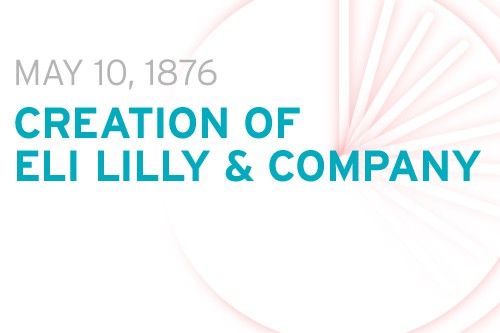
The pharmaceutical industry is full of famous surnames; the general public may not have heard of Jacob Friedrich Merck, James Wood and Edward Mead Johnson or Edward Robinson Squibb, but they certainly know the names of the companies that took their names.
Another surname still going strong, 116 years after his death, is that of Colonel Eli Lilly, one of the pioneers of the pharma industry in the US whose company went on to become a pioneer in the provision of diabetes care in the 20th century.
Lilly’s story starts some time before that in 1838 in Maryland, US, where he was born to parents of Swedish descent. His family moved around the eastern part of the US for several years before settling in Indiana in the 1850s.
Lilly’s interest in pharmaceuticals started when – as a teenager – he visited the Good Samaritan Drugstore on a trip to see relatives in Lafayette and became fascinated by its contents, eventually becoming an apprentice pharmacist at that same store.
There he learnt to mix drugs and carry out business tasks, before leaving to join the drug retailer Israel Spencer and Sons. This experience equipped him with the knowledge and skills to open his own drugstore at the age of 23 in 1861.
It was at this time that the country became embroiled in the US Civil War and Lilly put his professional and personal life on hold to join a regiment of the Indiana Volunteer Militia – then a part of the Union war effort against the Confederate states of the South.
Lilly’s war ambitions led to him commanding an artillery battery of Indiana solders, which faced Confederate forces in Kentucky and Tennessee, before joining another brigade. He was briefly a prisoner of war until his release in a prisoner exchange saw him continue fighting, eventually being promoted to Colonel in 1865.
In his post-war career, Colonel Lilly attempted to become a cotton farmer in Mississippi, although drought and a corrupt partner put paid to these ambitions. These failings were followed by the death of his wife, and the Colonel moved back to Indiana to continue his work as a chemist, entering into partnership with Binford & Lilly, Practical Pharmacists.
A few years later though, and Colonel Lilly’s ambitions grew beyond pharmacy, and in 1874 he entered a partnership with Dr John Johnston to create a manufacturing firm in Indianapolis.
This business again ended failure and dissolved in 1876. Colonel Lilly’s reputations as a drug maker remained intact, however, and he was encouraged by the wholesale druggist Augustus Kiefer to go it alone.
With Kiefer committing to place orders with the Colonel’s new venture, Lilly had the confidence to rent a building on West Pearl Street in Indiana, where, on May 10, 1876, at the age of 38, he founded the pharmaceutical manufacturing business Eli Lilly, Chemist – the precursor to Eli Lilly & Company.
Colonel Lilly made a series of commitments for his new venture, including developing only medicines that would be dispensed at the suggestion of physicians and making medicine based only on the best science of the day.
This desire to lead by example saw the Colonel hire a research scientist whose sole role was to use and improve upon the newest techniques for quality evaluation of medicines, laying the foundations for a company that discovered and developed better pharmaceutical products than those of the day.
The business grew under Colonel Lilly’s leadership, with the company taking on more employees and new facilities, and investing more in research and innovation than its rivals. By the Colonel’s death in 1898 Lilly had a product line of 2,005 items and annual sales over $300,000.
With Colonel Lilly’s passing, his son Josiah Lilly inherited the company, and led it for the early part of the 20th century. This proved to be an important time not just for Eli Lilly & Company but for the lives of people with diabetes around the world, as in 1923 the Canadian researchers Frederick Banting and Charles Best were able to isolate and purify insulin.
It was a ground-breaking discovery for people with type 1 diabetes, which had previously been a death sentence for anyone diagnosed with the condition.
The discovery alone would not have been as revolutionary without a way to manufacture insulin in the amounts needed, which is where Eli Lilly & Company stepped in to help produce the medicine in bulk.
In 1923 Lilly launched Iletin – the world’s first commercially available insulin product – changing the fate of people with diabetes around the world and continuing Colonel Lilly’s ideals of innovative medicines at the cutting edge of science.
Such a successful product also gave the company a springboard for growth over the 20th century, much of which came under the leadership of Colonel Lilly’s grandson Eli Lilly who led the company as it made advances in another hugely important area of healthcare – antibiotics.
Now in 2014, the industry may have changed dramatically from 1876, but the name remains the same, letting the Colonel live on.
Sources:





